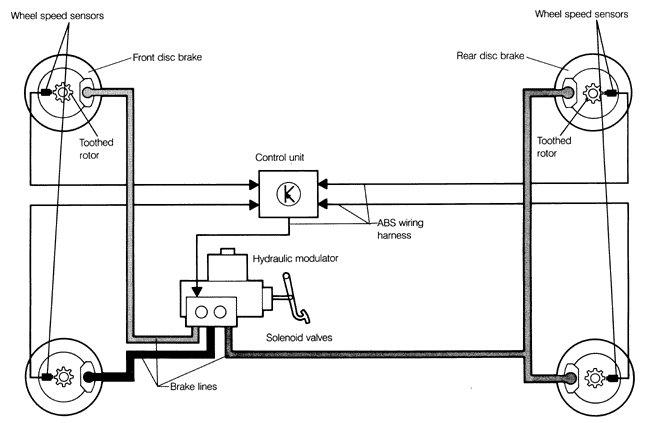1.2 Anti-lock Braking System (ABS)
Fig. 1-4 is a schematic diagram of the Teves anti-lock braking system. In place of the conventional brake master cylinder and brake booster is the hydraulic modulator. It provides the usual brake actuating function of the master cylinder and the brake pressure boosting function of the brake booster. With input from the ABS control unit, it also manipulates the brake pressure to each wheel for anti-lock control. The remaining brake system components - the disc brake assemblies and the parking brake-are virtually identical to the conventional four-wheel disc brake system.
WARNING-
Before beginning any brake work on an ABS-equipped car, depressurize the system by depressing the brake pedal with the engine not running - 25 to 35 times or until there is a noticeable increase in pedal effort. The ABS operates at very high pressure - as much as 210 bar (3045 psi) - and is self-pressurizing. This pressure may be retained in the system even though the car is not running and has not been driven recently.
|
| Fig. 1-4. | Schematic view of anti-lock brake system. Hydraulic modulator (with control unit) replaces conventional master cylinder. |

|
CAUTION-
Before beginning any mechanical work on the ABS system, switch off the ignition and disconnect the battery ground (-) cable from the battery.
|
|
